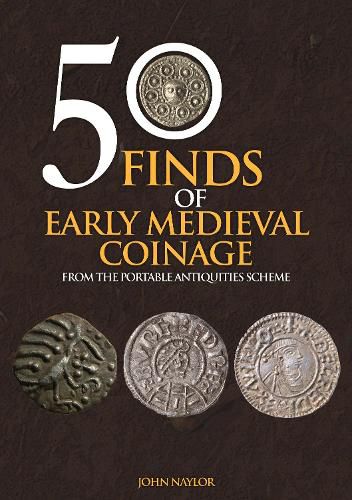Readings Newsletter
Become a Readings Member to make your shopping experience even easier.
Sign in or sign up for free!
You’re not far away from qualifying for FREE standard shipping within Australia
You’ve qualified for FREE standard shipping within Australia
The cart is loading…






Since 1997 the Portable Antiquities Scheme has recorded almost 1.5 million objects found in England and Wales, the vast majority discovered by members of the public rather than professional archaeologists. Among these finds are in excess of 10,000 early-medieval coins. Each one of these coins has its own story to tell, from its minting, use and loss through to its eventual recovery and recording. In this book, Dr John Naylor, the PAS’s National Finds Adviser for Early Medieval and Later Coinage, explores the Anglo-Saxon world through these coin finds, tracing the development of coinage from the end of Roman Britain to the Norman Conquest of 1066 and how they were used by early-medieval people. As well as their use in trading, he shows how they can help us to understand how the Anglo-Saxons saw themselves through looking at coin design and iconography, and how they were used in diverse and interesting ways such as their inclusion in burials and hoards, and their re-use as items of jewellery. Each of the ‘50 Finds’ forms a case study from a finds recorded by the PAS exploring an aspect of Anglo-Saxon coinage and its use.
$9.00 standard shipping within Australia
FREE standard shipping within Australia for orders over $100.00
Express & International shipping calculated at checkout
Since 1997 the Portable Antiquities Scheme has recorded almost 1.5 million objects found in England and Wales, the vast majority discovered by members of the public rather than professional archaeologists. Among these finds are in excess of 10,000 early-medieval coins. Each one of these coins has its own story to tell, from its minting, use and loss through to its eventual recovery and recording. In this book, Dr John Naylor, the PAS’s National Finds Adviser for Early Medieval and Later Coinage, explores the Anglo-Saxon world through these coin finds, tracing the development of coinage from the end of Roman Britain to the Norman Conquest of 1066 and how they were used by early-medieval people. As well as their use in trading, he shows how they can help us to understand how the Anglo-Saxons saw themselves through looking at coin design and iconography, and how they were used in diverse and interesting ways such as their inclusion in burials and hoards, and their re-use as items of jewellery. Each of the ‘50 Finds’ forms a case study from a finds recorded by the PAS exploring an aspect of Anglo-Saxon coinage and its use.